By Rick VanSickle
If not for an unexpected surprise discovered in its chief estate vineyard, Niagara’s Domaine Queylus would have likely existed as a two-trick pony, focused entirely on Pinot Noir and Chardonnay.
That’s what the dozen or so Quebec partners from Queylus had envisioned for their wine project — a Burgundian model of village and “cru” Pinots and Chards crafted by the man who built the (now gone) Le Clos Jordanne portfolio, Thomas Bachelder.
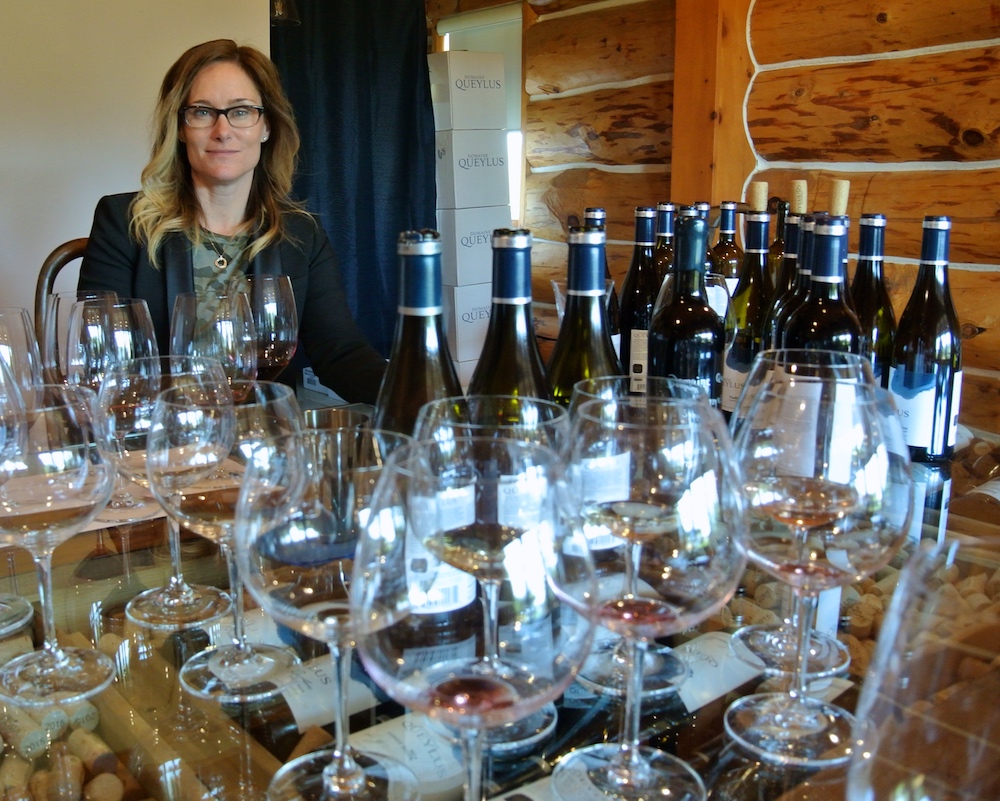
Thing is, when Queylus enlisted the help of Alain Sutre, a French viticulturalist with an extensive successful portfolio of helping new wineries plan their vineyards, he found a vein of desirable and unique blue-clay soil in the unplanted vineyard that got his full attention.
The plan had always been to plant Chardonnay and Pinot Noir at the Queylus Vineyard in Beamsville, but the discovery of blue-clay, similar to the Right Bank Bordeaux region of Pomerol, home to some of the most famous red wines in the world, was too significant to ignore.
The partners were easily convinced by Sutre to add Bordeaux varieties — Cabernet Franc and Merlot — to the planting mix in the new vineyard and thus was born a unique marriage of Burgundy- and Bordeaux- variety wines made under the same label and by the same winemakers — Bachelder and Kelly Mason.
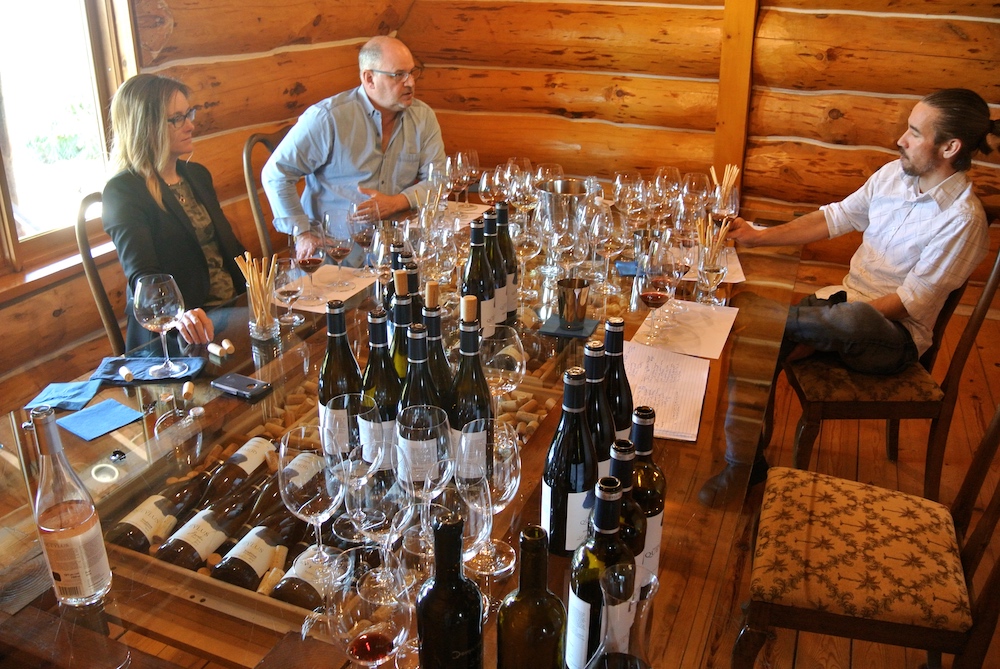
It might seem as though the delicacy of Pinots and Chards juxtaposed with the power and concentration of Merlot and Cabernet is a contradiction, but, no, not at all. Top wineries in Niagara have embraced what they feel they can produce at the highest level and often that is a combination of Burgundy, Bordeaux and German noble varieties. It is part of the mosaic that makes Niagara so unique and instills a can-do attitude with these New World winemakers.
While it is a fact that Pinot Noir, Chardonnay, Riesling and Gamay have no trouble excelling at the highest levels from vintage to vintage, the likes of Merlot, Cabernet Sauvignon and Cabernet Franc (to a lesser extent) are more vintage prone. The appeal far out-weighs the risks.
Queylus utilizes strong terroir from both its namesake vineyard and that of the Neudorf Vineyard (previously called La Petite Colline and contracted to the Le Clos family) in Jordan to produce a range of varieties identified as perfectly suited to its vineyard’s soils and microclimate. These varietals are Chardonnay, Pinot Noir, Merlot, and Cabernet Franc.
And what Queylus does, it does very well.
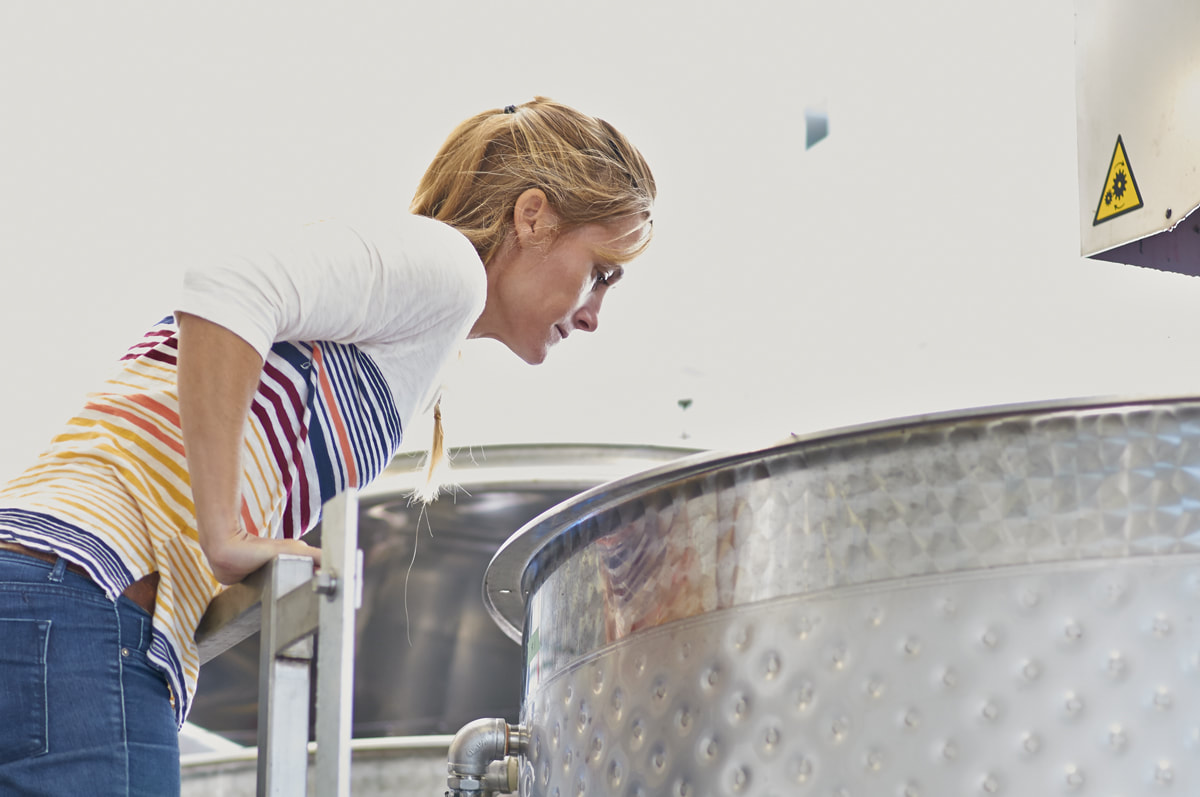
At a tasting recently with winemaker Mason, general manager John Nadeau and Bolete Chef Andrew McLeod, the full range of the portfolio was put on display for us to taste. From soulful Pinots and mineral-laden Chardonnays to the ultimate Cabernet Franc/Merlot blend, a one-barrel selection of the top fruit from the best blocks in the Queylus Vineyard called Summus, chosen blind by both Bachelder and Mason, this winery has chosen a path that puts it firmly among the top Niagara vintners striving to make world-class wines.
The combination of Bachelder (he has his wines under the Thomas Bachelder label) and Mason (winemaker at Honsberger and The Farm as well as having her own vineyard) has developed into a dream team that share similar goals in winemaking. Both eschew the heavy handed use of oak, both look for expressions of terroir from where the grapes are grown, they both want balance above all, everything is wild fermented and as little intervention in the winery as is possible.
Mason’s love of winemaking began during a vacation in Napa Valley in 2007 that resulted in an internship at Saintsbury Winery under a Burgundian winemaker. She then studied winemaking at Brock University before working first at Tawse Winery and then at Le Clos Jordanne, always focused on Chardonnay and Pinot Noir. She joined the Queylus team in the spring of 2013.
“I hope what everyone can see in our wines is consistent balance,” Mason says.
Here is what I can recommend from our recent tasting at the estate.
The Chardonnays
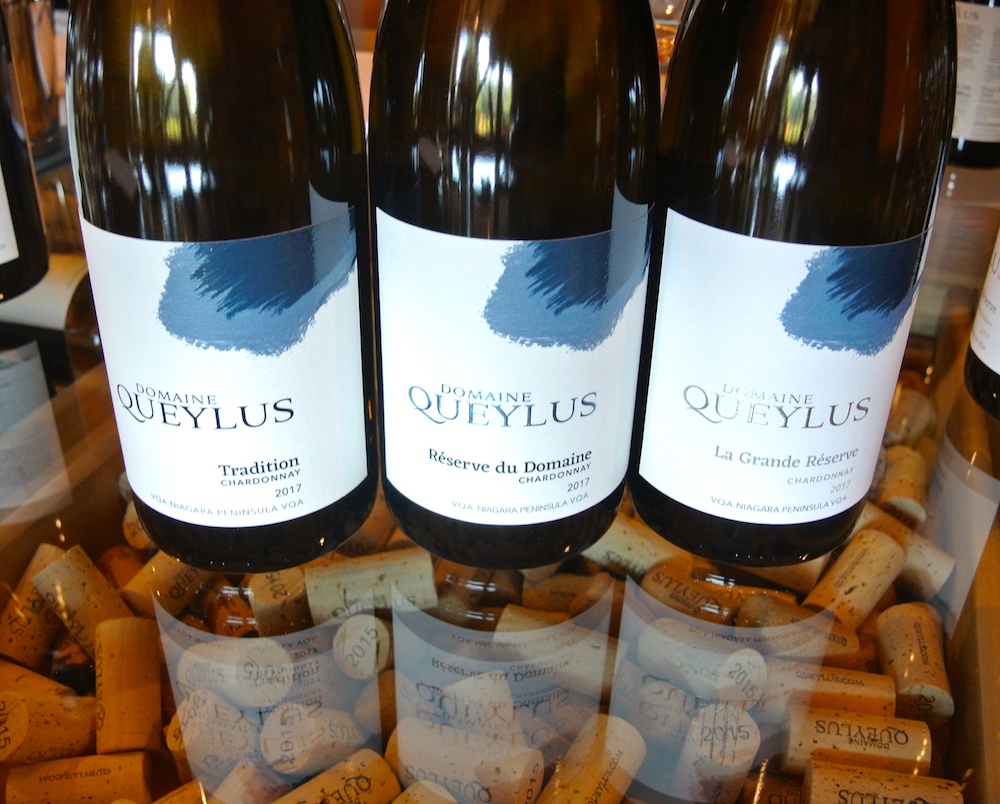
Domaine Queylus Tradition Chardonnay 2017 ($28, 89 points) — Such a pretty nose for a wine as this price point, with fresh green apples, pear, elegant spice notes and just a bit of citrus around the edges. It is fresh and finessed on the palate with a range of orchard fruits, integrated spice and minerals with a vibrant finish.
Domaine Queylus Réserve du Domaine Chardonnay 2017 ($38, 91 points) — All estate fruit from Queylus Vineyard, all wild ferment, wild malo and barrel fermented and barrel aged in 100% French oak (22% of which is new oak). A personable nose of quince, subtle vanilla toast, flint, Meyer lemon and a hint of peach. It’s richer and rounder on the palate with gorgeous pear, bin apple, minerals and a long vibrant finish.
Domaine Queylus La Grande Réserve Chardonnay 2017 ($50, 93 points) — The fruit is from Questa Vineyard on the Twenty Mile Bench and spends 18 months in mostly older French barrels. As Mason says, the Chardonnay range “gets more focused as you go along.” She rejects any notion that Queylus Chards chases the riper style of Chardonnays, especially at this level. “I don’t want pineapple and tropical notes,” she says. This is a leaner, tighter, taut style of Chardonnay that will open up with some time. The nose is all about lemon pith, citrus zest, freshly sliced apple, flinty/stony minerality and freshness with complementing spice notes. It is so fresh and lifted on the palate with lemon, grapefruit, bin apple, Bosc pear, elegant spice notes, beautifully balanced and finessed with an echoing finish. Clean, crisp and already showing impeccable balance.
The Rosé
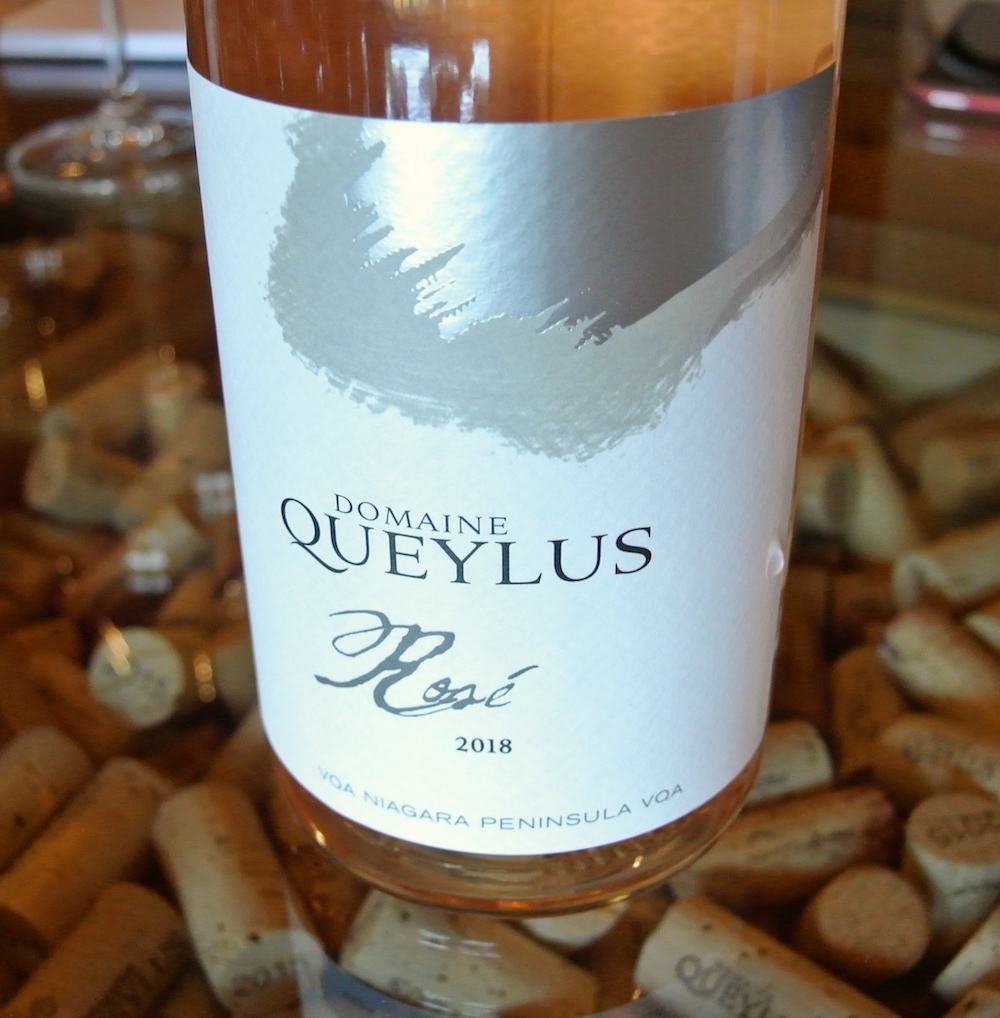
Domaine Queylus Rosé 2018 ($24, 89 points) — This 100% Pinot Noir rosé is made in the saignée method. It shows a pale salmon colour in the glass with a pretty nose of cran-cherries, raspberries and subtle herbs. It’s perfectly dry on the palate and quite lovely with delicate red berries and mouth-watering acidity.
The Pinot Noirs
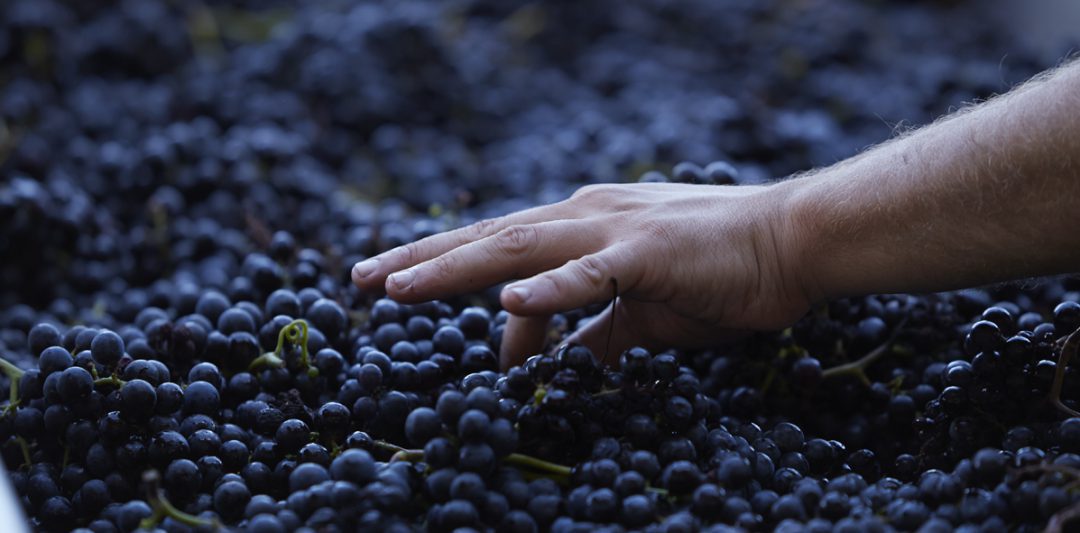
Domaine Queylus Tradition Pinot Noir 2016 ($32, 89 points) — From the warm 2016 vintage, this Pinot has a nose of brambly wild raspberry, black cherries, violets, plums and integrated herbs and spice. The tannins are evident on the palate with darker fruits, cassis, black cherries, cocoa, spice and good vibrancy through the finish. Can age 3+ years to soften the tannins.
Domaine Queylus Réserve du Domaine Pinot Noir 2016 ($45, 91 points) — A more intense nose of pretty red berries, earth, savoury notes, moderate and fine spice, plums and minerals. Tannins are more integrated than the Tradition with pleasing red berries emerging, bramble, plums, savoury spices and a long, finessed finish. Lovely Pinot that will age 5+ years.
Domaine Queylus La Grande Réserve Pinot Noir 2016 ($60, 93 points) — Sourced from top parcels and blocks at Neudorf Vineyard (previously called La Petite Colline and used for Le Clos), it has a complex and interesting nose of brambly red fruits, subtle spice, forest floor, mushrooms, highly perfumed, intense and minerally. It’s simply wonderful on the palate; such a pretty Pinot with delicate red fruits, herbs, polished tannins, depth, minerality, integrated and fine oak spice notes and finesse through the finish. Can cellar but quite attractive right now.
The Other Reds
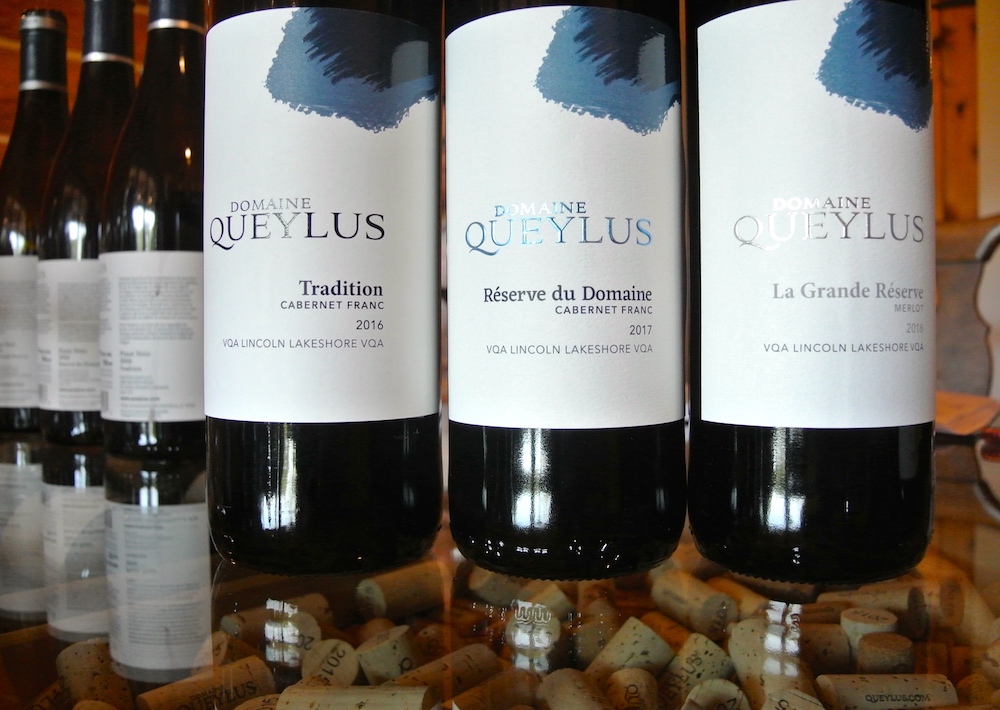
Domaine Queylus Tradition Cabernet Franc 2016 ($28, 91 points) — The fruit is whole berry pressed and has such an enticing nose of wild raspberries, dark cherries, cassis, integrated herbs, iron, subtle spice and red currants. It has lovely mouth-feel, plush tannins, spice, earthy red fruits, integrated herbs and a lovely vein of minerality through the long and finessed finish.
Domaine Queylus La Grande Réserve Merlot 2016 ($50, 93 points) — From the pockets of blue clay soil discovered at the Queylus Vineyard on Mountainview Road, below Highway 8 in the Lincoln Lakeshore sub app. Such a beguiling and complex nose of pretty red berries, blue plums, black currants and cassis with elegant spice notes, iron/stony minerality and a touch of graphite for good measure. This is a marvel on the palate, highly structured and complex that’s shows a range of anise, graphite, crushed red berries, polished tannins, currants, minerals galore, elegant, controlled spice and a long, long finessed finish. A very fine Merlot that can cellar 10+ years.
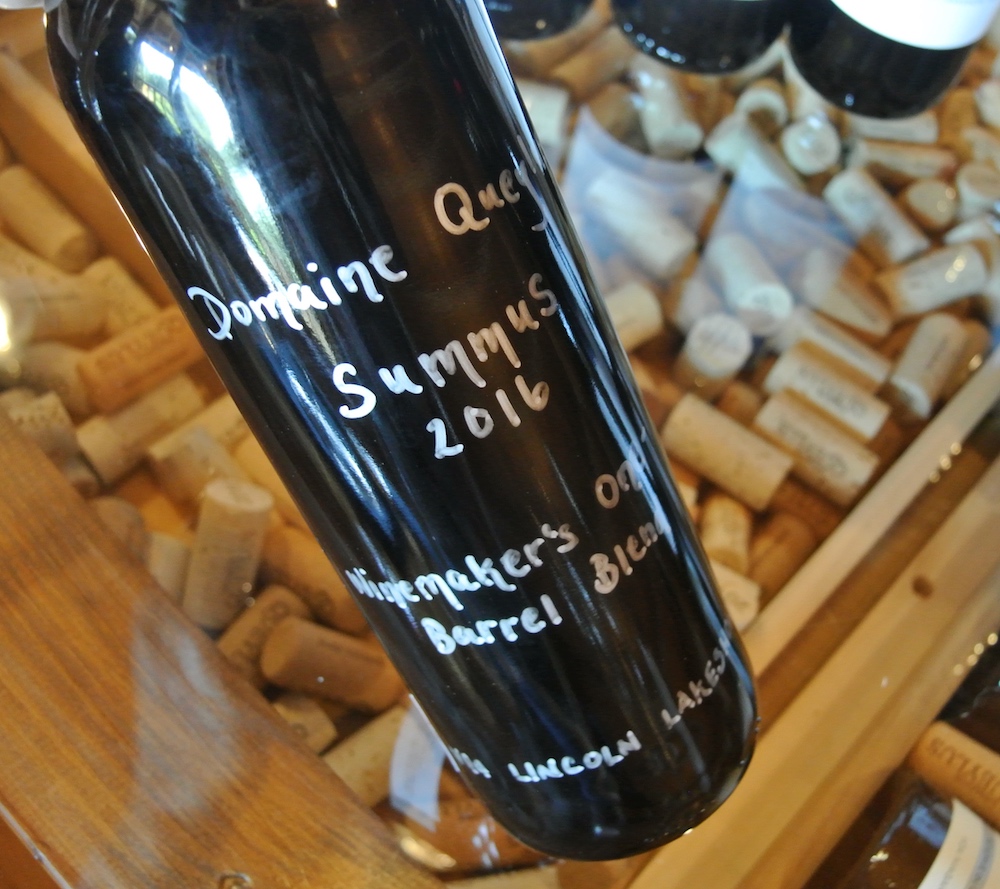
Domaine Queylus Summus Winemaker’s One Barrel Blend 2016 ($95, 94 points) — This will be the first wine released from Queylus above the Grande Reserve level once the winery decides to put it on the shelf. The challenge issued to winemakers Bachelder and Mason from GM Nadeau was to make a single barrel of the best of the best from the Queylus Vineyard. They decided on a mix of 50/50 Merlot and Cabernet Franc after independently tasting each barrel of wine in the cellar. Incredibly, both identified the same barrels for the blend and thus Summus (“top of the mountain”) was born. “It’s all about raising the bar,” Nadeau said at our tasting. This is the second time reviewing this wine, and it keeps improving. It’s simply a knock out blend that shows a pretty, yet powerhouse nose of blackberries, black cherries, black currants, graphite and elegant, spicy oak barrel notes. It has mouth-puckering tannins at this early stage with a range of dark and red fruits, chalky minerality, subtle herbs, depth and lovely elegant oak spices. I expect great things from this wine when it’s released and many, many years of life after that. Each label on the bottle is hand-written and the bottle is capped off with a white wax seal. A beautiful thing that can be cellared 10-15 years.






Comment here